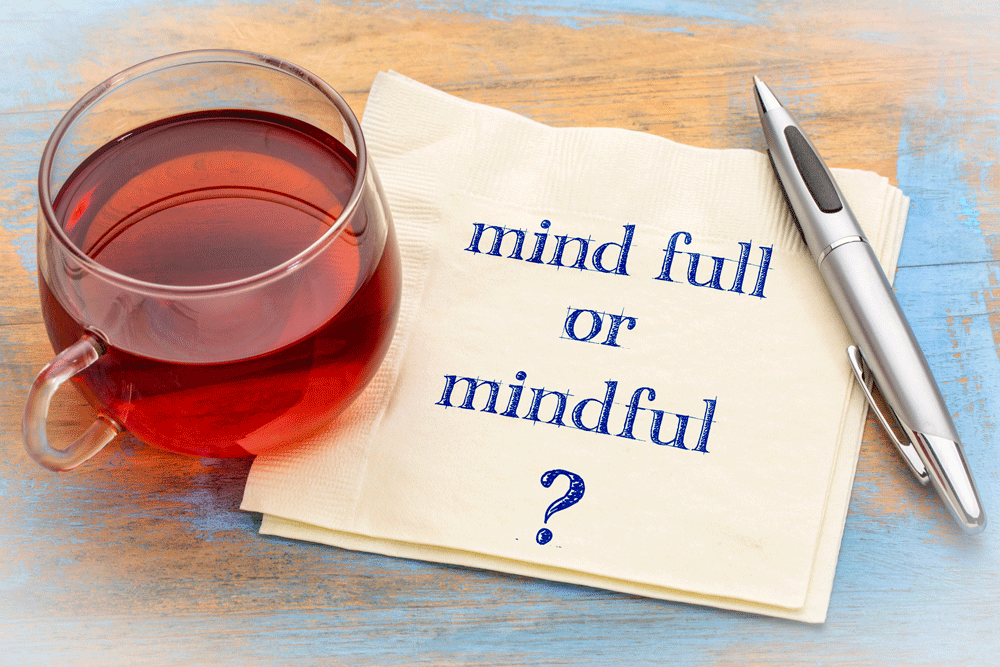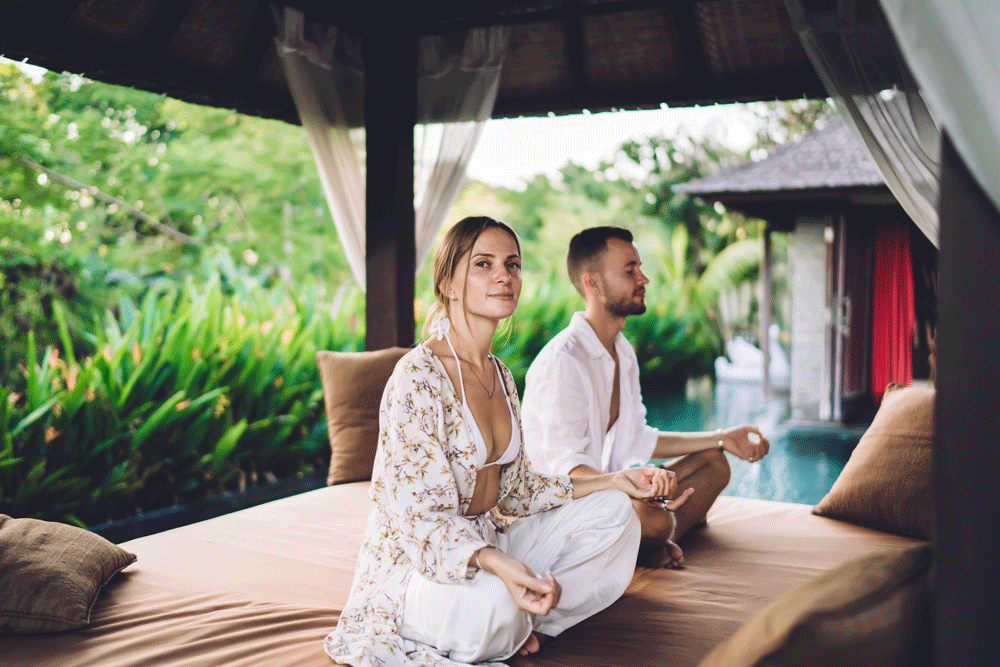JUST BREATHE
The Just Breathe website offers a range of breathing exercises, tips and advice for people that want to learn how to use breathing to be more present and happier and improve their mental health.
Anxiety
Get tips and advice on how to use breathing exercises to help manage anxiety.
Depression
Get tips and advice on how to use breathing exercises to help alleviate depression.
Sleeplessness
Get tips and advice on how to use breathing exercises to help with sleeplessness.
Stress
Get tips and advice on how to use breathing exercises to help manage stress.
Just Breathe Mindfulness Blog

What is mindfulness? Mindfulness is a practice and state of mind that involves paying attention to the present moment with non-judgmental awareness. It is the quality of being fully engaged in the present without getting caught up in thoughts about the past or worries about the future. Mindfulness involves intentionally directing attention to the sensations, thoughts, and emotions that arise in the present moment. Mindfulness is rooted in ancient Buddhist traditions but has gained significant popularity in contemporary psychology and well-being. It is often cultivated through meditation techniques, although it can also be incorporated into daily activities and interactions. The key aspects of mindfulness include: Present moment awareness : Mindfulness involves intentionally bringing attention to the present moment, observing and accepting whatever arises, without getting carried away by thoughts or judgments. Non-judgmental attitude : Mindfulness encourages an attitude of non-judgment and acceptance towards one's experiences. It involves observing thoughts, emotions, and sensations without labelling them as good or bad, right or wrong. Openness and curiosity : Mindfulness encourages a sense of curiosity and openness to the present moment, allowing for a fresh and non-reactive perspective. The benefits of practising mindfulness include: Stress reduction: Mindfulness can help reduce stress by making individuals more aware of their thoughts and emotions, helping them respond to stressors more calmly and effectively. Improved mental well-being: Regular mindfulness practice has been linked to reduced symptoms of anxiety , depression and improved overall mental well-being. Increased self-awareness: Mindfulness cultivates self-awareness, allowing individuals to better understand their thoughts, emotions, and behaviour patterns, leading to personal growth and development. Enhanced focus and concentration: Mindfulness exercises can improve attention and concentration by training the mind to stay present and focused on the task. Improved relationships: Mindfulness can enhance interpersonal relationships by promoting active listening, empathy, and compassionate understanding. Tips for being mindful Mindfulness is a skill that can be developed through consistent practice, and there are various techniques and resources available, such as guided meditations, deep breathing techniques , mindfulness-based stress reduction (MBSR) programs, and mindfulness apps, to support individuals in incorporating mindfulness into their lives. Mindfulness is growing in popularity Mindfulness has become popular for several reasons, with a growing body of scientific research supporting its benefits and an increasing interest in holistic well-being. Here are some key factors contributing to its popularity: Stress and well-being: Modern lifestyles often involve high stress, anxiety, and mental health challenges. Mindfulness offers a practical approach to managing stress, promoting relaxation, and improving overall well-being. As people seek effective coping strategies, mindfulness has emerged as a valuable tool. Scientific research: Over the past few decades, numerous studies have explored the effects of mindfulness on mental and physical health. Research has shown its potential to reduce stress, anxiety, depression, and chronic pain and improve cognitive functions, resilience, and emotional regulation. The growing body of evidence has contributed to the credibility and popularity of mindfulness. Mindfulness-Based Interventions (MBIs): Mindfulness-based interventions, such as Mindfulness-Based Stress Reduction (MBSR) and Mindfulness-Based Cognitive Therapy (MBCT), have been developed and widely implemented in clinical and therapeutic settings. These structured programs provide individuals with training in mindfulness techniques and have demonstrated effectiveness in various populations, further fueling interest and adoption. Mainstream integration: Mindfulness has made its way into mainstream culture, becoming more accessible and accepted. It has been incorporated into healthcare, schools, workplaces, and community settings. Many organizations now offer mindfulness programs, meditation apps, and online resources, making it easier for individuals to learn and practice. Celebrity endorsements and media coverage: Prominent individuals, including celebrities, athletes, and business leaders, have publicly endorsed mindfulness and shared their personal experiences. Media coverage and positive testimonials have increased public awareness and interest in mindfulness practices. Mindfulness in education: Mindfulness programs have gained traction in educational settings, with teachers and schools recognizing the potential benefits for students' attention, emotional regulation, and overall well-being. Integrating mindfulness into curricula has helped introduce it to a younger generation and further popularize its practice. Internet and technology: The digital age has made mindfulness resources accessible to a wider audience. Numerous mindfulness apps, online courses, and guided meditations are available, allowing individuals to practice mindfulness conveniently from their devices. Personal growth and self-care movement: The contemporary emphasis on personal development, self-care, and holistic well-being has aligned well with the principles and benefits of mindfulness. As people prioritize self-care and seek ways to enhance their overall quality of life, mindfulness has become a go-to practice for many. Overall, the combination of scientific research, integration into various settings, increased accessibility, positive testimonials, and cultural shifts towards holistic well-being has contributed to the rising popularity of mindfulness in recent years.

Loneliness is often misunderstood as simply being alone, but this misconception couldn't be further from the truth. Loneliness and solitude are two distinct states of being that profoundly impact our emotions and mental well-being. In this article, we will delve into the disparities between loneliness and solitude, exploring various philosophies on harnessing solitude to enrich our lives. We will also discuss how to manage anxiety , stress, and combat depression through the power of solitude. Lastly, we will provide guidance on transitioning from loneliness to solitude and delve into the philosophical distinctions between these two states of being.

Breathing mindfulness reflects the present, allowing us to observe our inner life and take stock of our mental, emotional, and physical states. It's a highly effective tool for managing stress and chronic pain and promoting healing. In this blog post, we will talk about the basics of breathing mindfulness: what it is and how to practice it. What Is Breathing Mindfulness? Breathing mindfulness is paying close attention to each breath entering and exiting your body. The goal is not necessarily to change your breathing patterns but rather to focus on the motion of your breath: its quality, texture, length etc. By paying attention to the rhythm of your breath in every moment - rather than thoughts that can pull you towards the future or past - you can become more mindful and aware of what's happening in the present moment. How to practice breathing mindfulness Close your eyes if possible or focus softly on one spot or object, such as a flower vase or candle flame. Start focusing on your breath for 3-4 deep breaths, noting where you feel each inhalation and exhalation in your body (for example, chest rising/falling or belly expanding/contracting). You can also use a mantra like "I am breathing in." As thoughts enter your mind without judgment, note them but then return your focus to your breath until it eventually floats away. Do this practice for 5 minutes twice daily and gradually increase the time to 15 minutes if desired. Aim for consistency rather than large chunks, so 10 minutes five times per week is preferable to 1hr once per week (although both have their benefits). Use your senses Once comfortable with essential breathing mindfulness, you could use other senses, like listening to different bird songs or feeling the wind blowing through leaves while mindful of each inhalation and exhalation. Connecting with your senses provides another layer of distraction-free concentration which helps bring calmness into more aspects of life besides just when meditating/practising conscious breathing.' Practice patience because learning mindful breathing usually takes some dedication for the best results, but it is worth it! Breathing mindfulness re-centres you For those seeking a moment of peace, breathing mindfulness effectively disconnects from the world and re-centres your attention on yourself. Through meditative breathing exercises, one can bring more awareness in the present moment and give their body a much-needed break. Breathing mindfulness is invaluable for those seeking to find peace and balance within themselves. It helps bring about greater self-awareness and allows you to understand your emotions and thoughts better. With regular practice, one can learn to regulate their breathing patterns to help relax the body and mind, reduce stress levels, and even experience a night of more restful sleep. Four things to remember For those just starting their mindful breathing journey, there are a few key things to remember. Firstly, taking time out of your day is essential to dedicate yourself fully to this practice. Taking time out in could be 5 minutes first thing in the morning or 5 minutes before bed – whatever works best for you. Secondly, try to find a comfortable, quiet space to practice, like in your bedroom, living room or even outside if the weather permits! Thirdly, start with simple breathing exercises such as focused and box breathing. These will help you to become more aware of your breath and body sensations. You can then gradually work up to more advanced mindful breathing techniques, such as alternate nostril and abdominal breathing. Finally, it is essential to remember that, like anything else, mastery of mindful breathing takes time and effort. Be patient with yourself, and don't expect too much too soon – progress will come with consistent practice. You can expect to experience greater inner peace and clarity and improved mental and physical health with regular practice. For those looking to dive deeper into mindful breathing, various resources are available on this website, such as YouTube clips and other meditative breathing exercises and tutorials. Several apps can guide how to practice mindful breathing exercises and track your progress over time.



